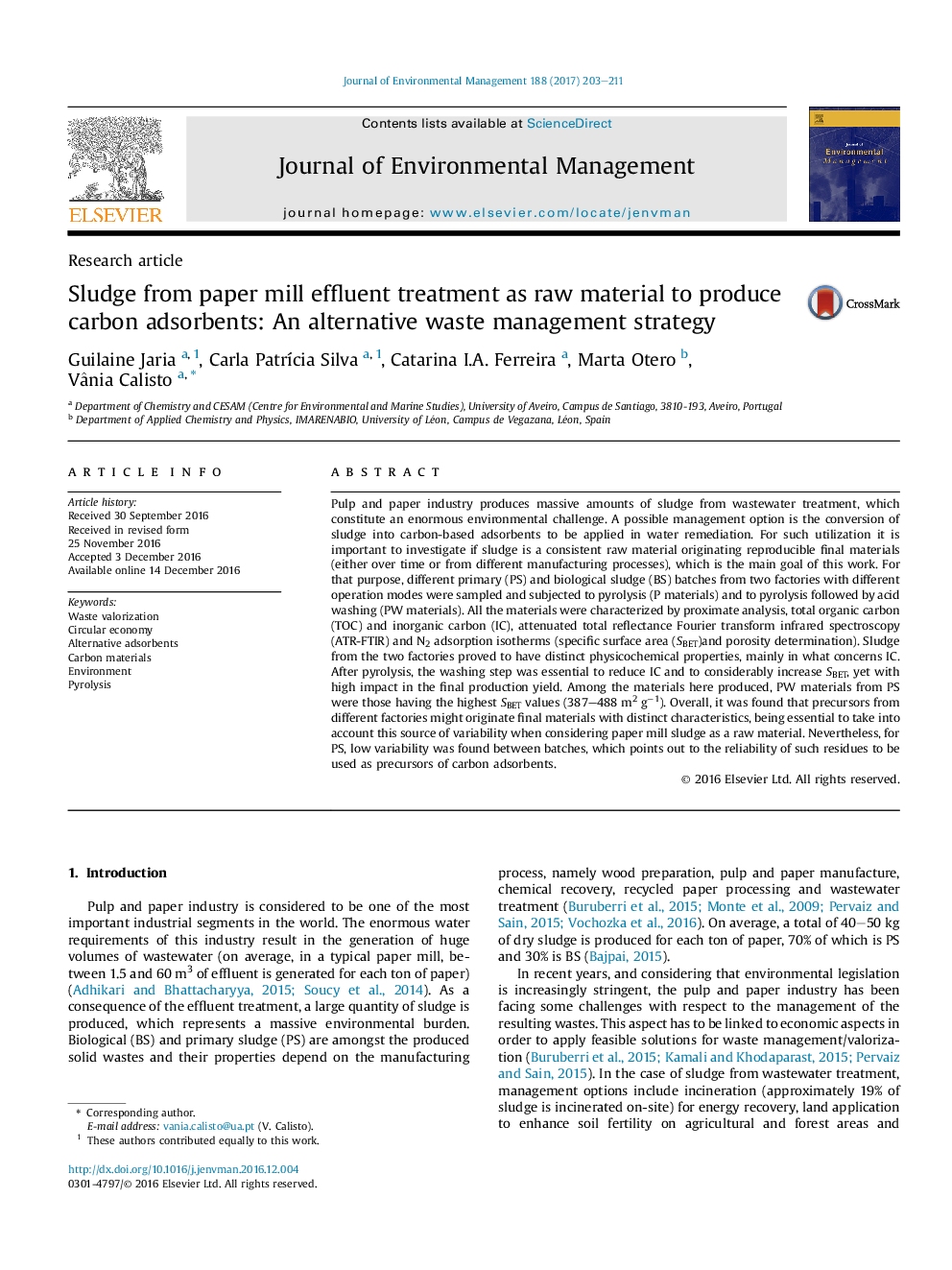| کد مقاله | کد نشریه | سال انتشار | مقاله انگلیسی | نسخه تمام متن |
|---|---|---|---|---|
| 5117138 | 1485227 | 2017 | 9 صفحه PDF | دانلود رایگان |
- Pyrolytic conversion of paper mill sludge into carbon adsorbents was evaluated.
- Consistency of raw materials and produced adsorbents was assessed for the 1st time.
- Primary (PS) and biological sludge (BS) from two different factories were sampled.
- Sludge from different factories might originate materials with distinct properties.
- PS presented low variability between batches revealing consistency.
Pulp and paper industry produces massive amounts of sludge from wastewater treatment, which constitute an enormous environmental challenge. A possible management option is the conversion of sludge into carbon-based adsorbents to be applied in water remediation. For such utilization it is important to investigate if sludge is a consistent raw material originating reproducible final materials (either over time or from different manufacturing processes), which is the main goal of this work. For that purpose, different primary (PS) and biological sludge (BS) batches from two factories with different operation modes were sampled and subjected to pyrolysis (P materials) and to pyrolysis followed by acid washing (PW materials). All the materials were characterized by proximate analysis, total organic carbon (TOC) and inorganic carbon (IC), attenuated total reflectance Fourier transform infrared spectroscopy (ATR-FTIR) and N2 adsorption isotherms (specific surface area (SBET)and porosity determination). Sludge from the two factories proved to have distinct physicochemical properties, mainly in what concerns IC. After pyrolysis, the washing step was essential to reduce IC and to considerably increase SBET, yet with high impact in the final production yield. Among the materials here produced, PW materials from PS were those having the highest SBET values (387-488Â m2Â gâ1). Overall, it was found that precursors from different factories might originate final materials with distinct characteristics, being essential to take into account this source of variability when considering paper mill sludge as a raw material. Nevertheless, for PS, low variability was found between batches, which points out to the reliability of such residues to be used as precursors of carbon adsorbents.
164
Journal: Journal of Environmental Management - Volume 188, 1 March 2017, Pages 203-211
